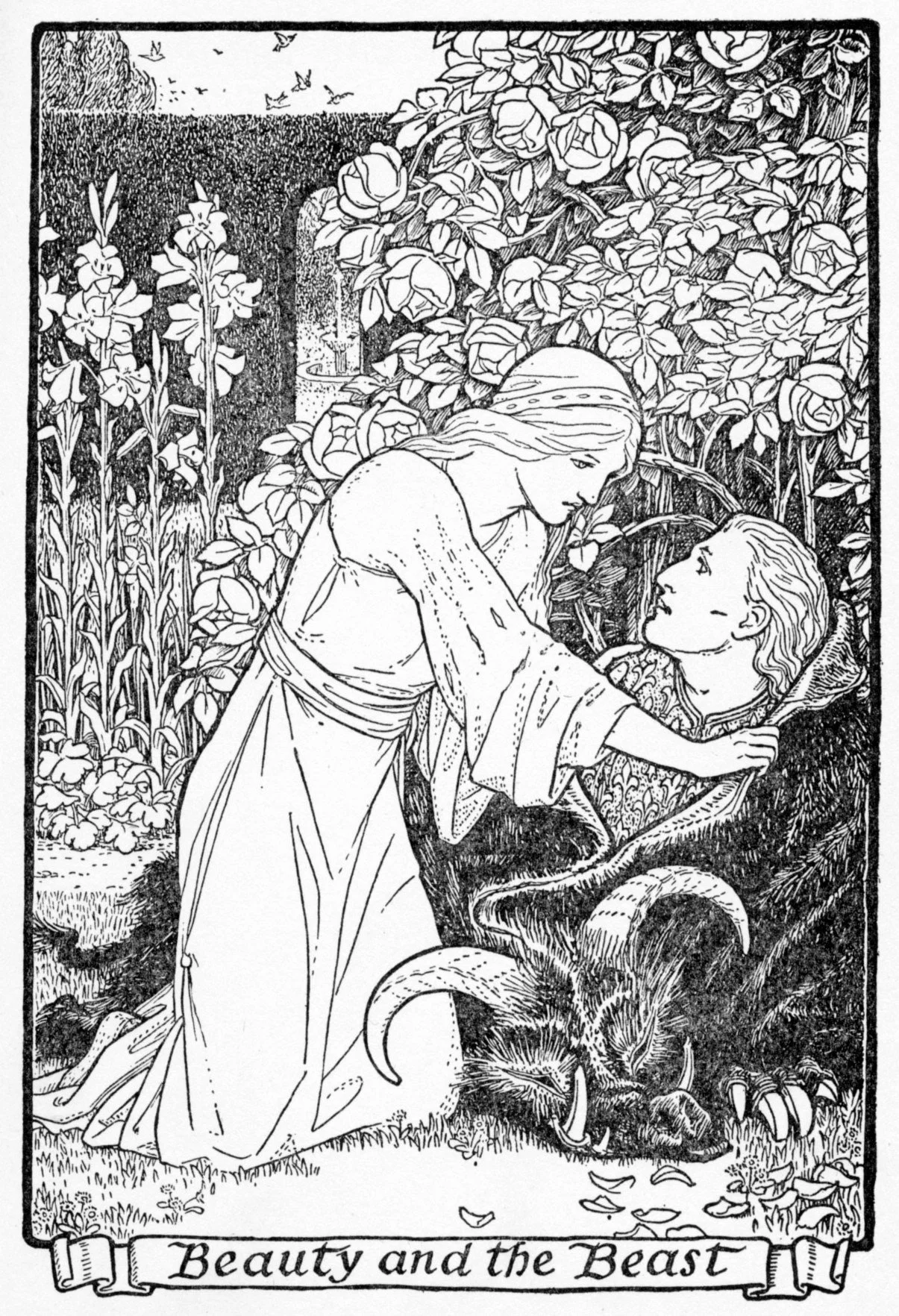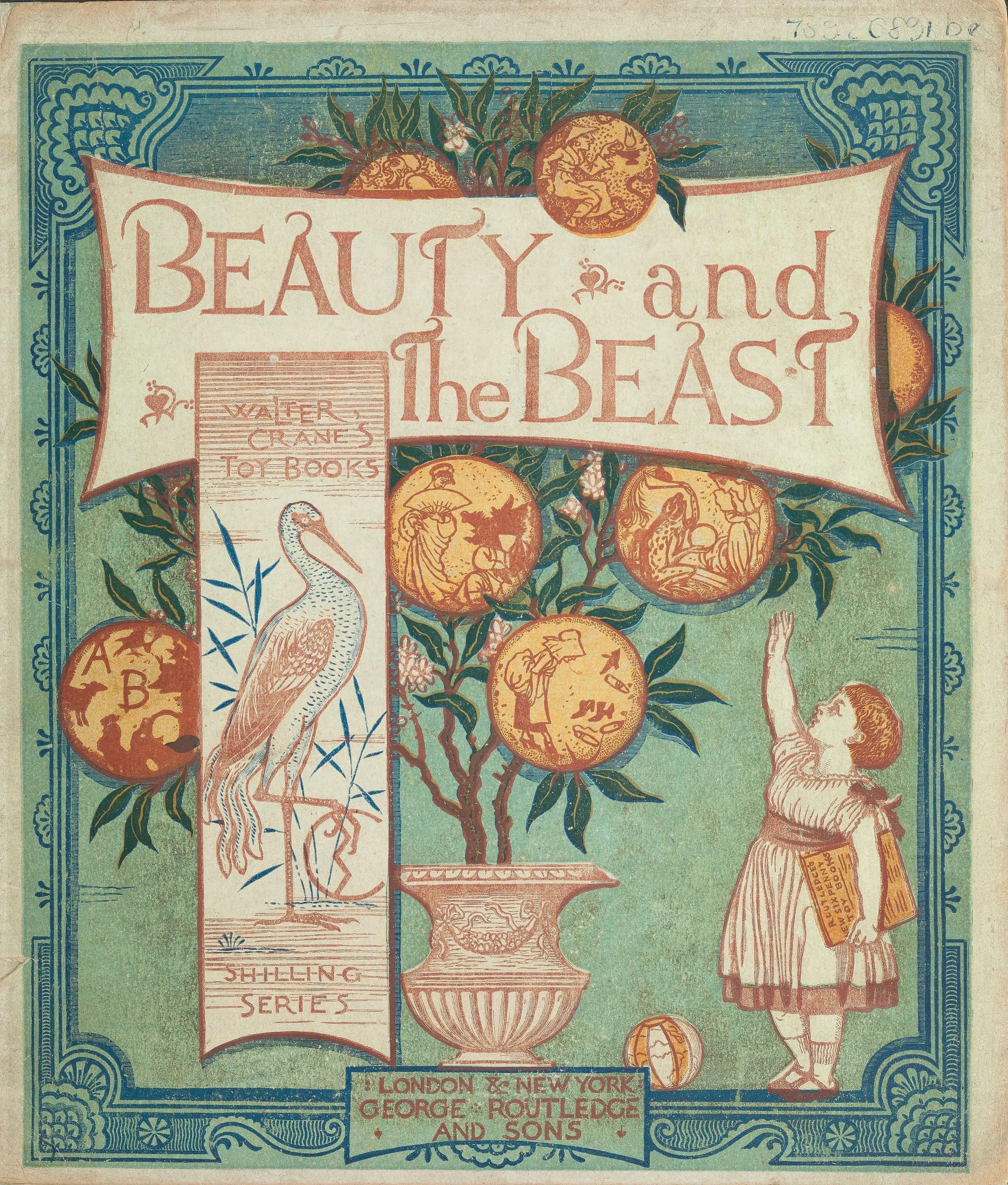By John D. Batten - Books, Public Domain, https://commons.wikimedia.org/w/index.php?curid=31130471
Beauty and the Beast Alan Menken Grade 1 ABRSM 2023 – 2024
Character/story – considering that this music is a song the player should know which words accompany this music. It is a gentle and touching song; this must be kept in mind when it is being played. Clearly the first phrase is an introduction to the piece and bars 19 and 20 are a postlude. The tempo for this piece is on the slower side, so the player must imagine how the singer is required to have considerable breath control and the ability to sing with subtle changes in the dynamics throughout the phrases. The L.H. plays a critical role in this piece too; the notes at the top of the page state that ‘experiment with different ways of emphasising the accompaniment rhythms of crotchet/minim and crotchet/minim/crotchet. There are occasions where the L.H. plays these accompanying patterns on their own; here the player must ensure that the momentum and interest is maintained at these points.
Form – the form of this piece is binary coupled with an introductory phrase in bars 1 – 4. The second section, commencing in bar 13 repeats the melodic line of bars 5 – 7 after which the melody changes, moving into a higher register. The key of the piece is C major and in bars 15 and 16 there is a fleeting move to F major. This would be an excellent piece to use with the player to discuss the use of the accompanying chords with the melody.
Main part of the music – this should occur at the beginning of beat three in bar 17 at a forte level. As discussed before, the melody at this point has moved higher thus creating a degree of tension. The suggestion of a mezzoforte dynamic is appropriate for the character of the music; too loud a dynamic at this point will destroy the gentle and reflective character of the piece. With this dynamic in mind, it would be sensible to use a mezzopiano dynamic at the end of bar 10 so that there is contrast dynamically with the ending.
Phrasing – as stated before, there are five phrases in this piece, including the introduction. The phrases after the introduction have a question-and-answer format with the second phrase ‘answering’ the first phrase. It is interesting to note, that the end of the fourth phrase is shortened which of course results in the last phrase being a little longer in comparison. This abbreviation of the fourth phrase contributes to the heightening of the tension at that point in the music. Apart from the end of the first phrase, the subsequent phrases move seamlessly from one to the next.
Tempo, time signature and rhythmic patterns – the suggested tempo of 88 crotchet beats per minute is entirely appropriate for the character and style of the piece. There is a danger that as the player becomes more familiar with the piece there will be an acceleration of the speed. This must be avoided, as the character of the music will be lost. Conversely, if played too slowly the music will sound laboured and dull. Considering that the music is written in simple quadruple time, the player must ensure that the first note of the four quaver pattern placed on beats three and four is not accented, as this could manifest in the music sounding in duple time instead. There is considerable use of syncopation in this music, firstly in the R.H. and then in the L.H. The player must be very careful in acknowledging the rests in this piece. There is a danger that the player may not hold the long notes for their full value.
Touch/articulation – the notes at the top of the page suggest ‘practice a smooth legato in the right hand from bar 5’ which is apt advice. Even where a note is repeated such as the R.H. G in bar 10 the player must ensure that the music sounds as legato as it possibly can. When playing the repeated chords, the lifting fingers must stay as close as possible to the key itself. The R.H.’s touch is cantabile throughout with weight being used from the shoulder coming through to a supportive arm and wrist. And, in the introduction and in the L.H., there must be a degree of resonance and depth to the notes and chords. Regarding articulation, the lifts shown are appropriate and stylish. As can be seen, there is more lifting nearer the end of the piece which contributes to the increasing tension moving to the main part of the piece. In addition to what is marked, a L.H. lift in the penultimate bar between the C and G adds a subtle effect.
By Walter Crane - http://www.waltercrane.com/illustrations/BeautyandtheBeast/orig-images/1.jpg, Public Domain, https://commons.wikimedia.org/w/index.php?curid=57362037
Balance between the hands – this is to the R.H. however this does not mean that the L.H. is not an active partner in this piece. Often, the L.H. is contributing to the dynamics with the R.H. taking its cue dynamically from the L.H. In the penultimate bars, as mentioned before, the L.H. has a lovely melodic pattern to play. The hands should merge dynamically in the final bar.
Dynamics - in this piece the player must have the ability to control the dynamics which are at the quieter end of the spectrum. Also, this piece requires considerable dynamic control in the L.H., as the syncopated patterns will either help to increase or decrease the dynamics according to the context in the phrase. The first phrase should be at a mezzopiano level as suggested and the following phrase should be quieter overall in comparison to the first phrase. From there the dynamics should gradually increase culminating in the loudest part in bar 17 at a mezzoforte level. There will need to be some tonal variation in the playing of the introduction. There is a danger that in playing quietly the notes are not heard at the beginning of the piece. Tone-matching is a necessary skill for playing this piece.
Agogic effects – there is a rit marked at the beginning of the penultimate bar which should be observed. However, this should not be at the expense of the realisation of the rhythmic patterns in this bar. To a certain extent, the composer has written in some rubato by using the syncopated patterns, or in the case at the end of the first phrase, using a semibreve in the final bar. In my opinion little or no other rubato should be employed.
Pedalling – this could be used in this piece however it is unlikely that most Grade 1 players could cope with the subtleties required when using pedal in this piece.
Considerations when playing this piece –
· There is a danger that some of the repeated chords may not completely sound.
· When playing with quieter dynamics, the player must use controlled weight from the shoulder through to the arm.
· There are many instances where the R.H. ‘emerges’ from the L.H.
· There are some quite large reaches in this piece.
· The player should use a relaxed floating gesture when lifting off the R.H. patterns. At the ends of these patterns the player should lift with the fingers still in contact with the keys.
· Both hands should lift at the end of the introduction, as this will highlight that something slightly different will be played.
· There is a danger that some of the chords may split when being played.
· There are some long diminuendos and crescendos in this piece; the player should grade these effectively and they do not have to, for example crescendo completely throughout. Dropping the dynamics a little before continuing the crescendo is effective.
· The L.H. takes on a more melodic role from bar 16.
· Both hands must lift cleanly at the end of beat two in bar 17.
· In bar 17 there is a slightly awkward use of the R.H. finger 5 in reaching the E.
· Even though there are numerous syncopated patterns, the music does not sound jazz oriented. It would be advisable to consider how these syncopated patterns contribute to the character of the piece.
· The L.H. Gs in bars 1 -3 are very important dynamically.
· In bar 19 the L.H. must have momentum and purpose.
· The L.H. becomes more insistent and resonant from bar 14 to the end of the piece.
· Considerable control of dynamics is required when playing this piece.
· The music must be played with simplicity and purity.
· The R.H. chord on the first beat of the bar in bar 17 must be played with care so that it doesn’t ‘pop’ out of the music dynamically.



